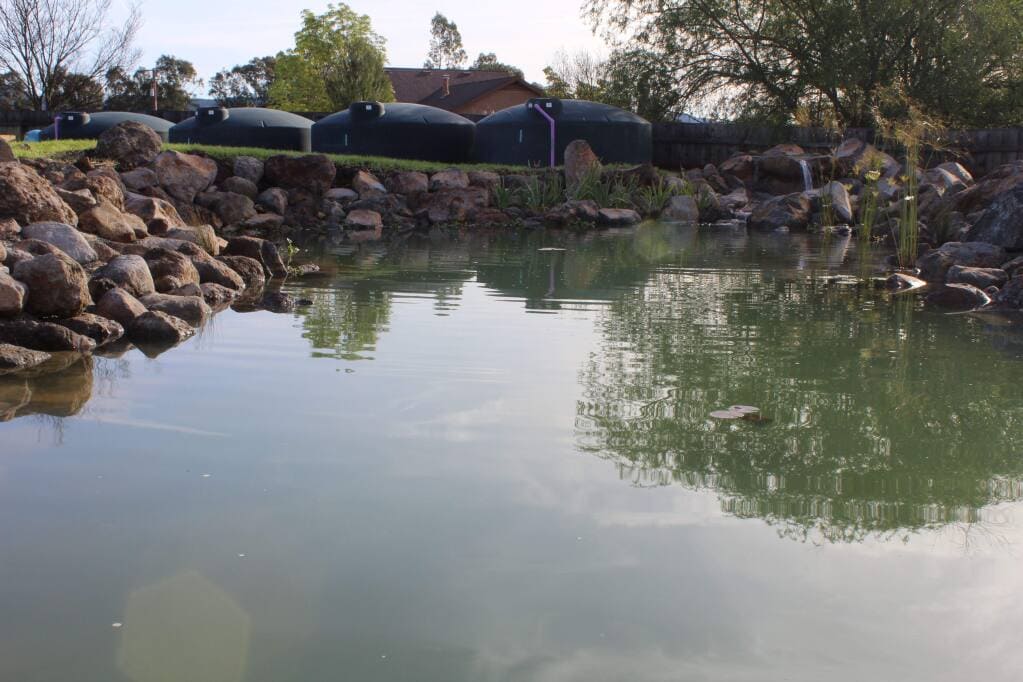There’s nothing quite like the symphonic pitter-patter raindrops make as they plunge water back into our aquifers — especially in drought-starved California. But as we see the rising need to preserve each and every drop, it makes one wonder if this glorious rainy season could be extended — at least when it comes to some of this excess water we see flooding our pastures and roadways.
The nonprofit Daily Acts has been promoting the thoughtful use of rainwater catchment systems for several years, most recently with a summer rebate program to combat the drought. Instead of becoming storm runoff, this would allow precipitation to feed a household garden for weeks, or even months, depending on the rainy season.
“There are many ways to go about designing your system so that it can effectively store a whole season’s worth of rain, or just individual rain events. Depending on your storage capacity this free water source can be used for irrigating your landscape during dry months, reducing both your water bill easing your conscience at the same time,” Daily Acts posted in a recent blog. “To give you a sense of how much rain you can collect: a 1,000-square-foot roof will shed 600 gallons for every inch of rain that falls.”
Some states frown on rainwater catchment systems, calling them a threat to groundwater tables, which also get replenished by the rain. But here in the increasingly dry west, the practice is becoming commonplace as a way to fight the perils climate change.
“If only 326 people collect 1,000 gallons of rainwater in their barrels or cisterns, that would leave 1 acre foot, or 326,000 gallons of water in our reservoirs. That amount of water could provide 60 gallons of clean drinking and bathing water to 5,433 people,” the Sierra Club posted, while pointing out that storm runoff should not be used for bathing or drinking, but is suitable for landscaping.
Rainwater catchment systems can be as small as a barrel or as big as a tiny home, depending on what kind of property you have. If you need some inspiration, check out Petaluma Bounty at 55 Shasta Avenue, which installed a rainwater catchment system in 2020. Daily Acts also hosts a helpful how-to video on its website.
Learning to make then most of what we have now will leave us more for our increasingly uncertain future — when every drop may count.


